[spacer height=”20px”]
KENYAN COFFEE PROCESSING
Coffee Processing from cherries into quality coffee beans requires extensive and delicate processing. The techniques and methods vary based on several factors including location, climate and even season. With every method determining the quality of coffee produced.
As a major Coffee Exporter, we ensure adherence to natural processing standards only.
We always strive to use the most natural method with the highest proven quality, the least amount of waste and the lowest possible impact on the environment.
[spacer height=”20px”]
PULPING
Freshly harvested cherries are passed through a pulping machine where the skin and pulp is separated from the bean. In a wet process, the fruit covering the beans is removed before they are dried. Coffee processed by this method is called wet processed or washed coffee. The wet method requires the use of specific equipment and a lot of water but produces better quality coffee than dry processing.
The pulp is washed away with water, usually to be dried and recycled as mulch, it serves a very good all-purpose manure. The water produced by wet processing of coffee produces can be toxic to the coffee plants. At our suppliers’ factories the wastewater along with the shell and mucilage are reprocessed in specially segregated area as compost to be used in other soil fertilization programs.
[spacer height=”20px”]
DEMUCILAGING
Depending on a combination of factors — such as the condition of the beans, the climate and the altitude — they will remain in these tanks for anywhere from 12 to 48 hours. The purpose of this process is to remove the slick layer of mucilage (called the parenchyma) that is still attached to the parchment; while resting in the tanks, naturally occurring enzymes will cause this layer to dissolve. When fermentation is complete the beans will feel rough, rather than slick, to the touch. The beans are rinsed by being sent through additional water channels.
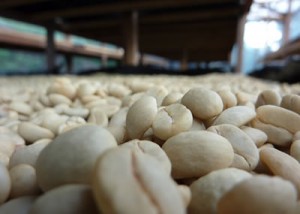

[spacer height=”20px”]
GRADING
After fermentation the coffee is sent into the grading channels where they are washed clean with the purest water. This process not only cleans the beans but as the flow of water carries the beans along the slight incline of the grading channels the coffee is separated with the most dense and best quality at the high end of the channel and the smaller lighter and defective beans flowing down channel where they are separated.
[spacer height=”20px”]
DRYING
Pulped coffee, still encased inside the parchment envelope (the endocarp) needs to have a moisture content of 11% before it is milled. For the best results and quality our coffee is sun dried on drying tables where it is turned regularly to ensure that it dries evenly. During the rainy seasons and winter months it is not possible to sun-dry the coffee parchment, the coffee therefore has to be dried mechanically with fans in special drying rooms.
[spacer height=”20px”]
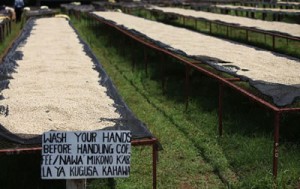
[spacer height=”20px”]
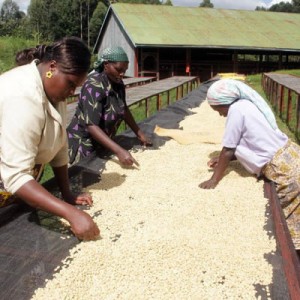
[spacer height=”20px”]
SORTING COFFEE
Once the dried coffee attains the required moisture content it goes through another rigorous sorting process, this time it is sorted by size and density and graded a Parchment 1-4 (P1-P4) with parchment 1 being the best quality (most dense) and 4 being the least (lightest). The coffee is also evaluated for colour flaws, imperfections and damage that could have been incurred while drying.
[spacer height=”20px”]
STORAGE
After Sorting, the parchment coffee can be turned into a coffee blend it must first go through a milling process to remove the endocarp.
The parchment is weighed and stored in 50Kg bags while it is bulked awaiting a date with the millers locally or internationally.
[spacer height=”20px”]
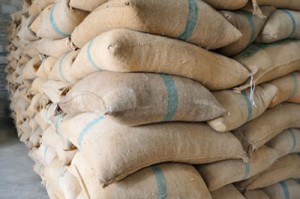
[spacer height=”20px”]
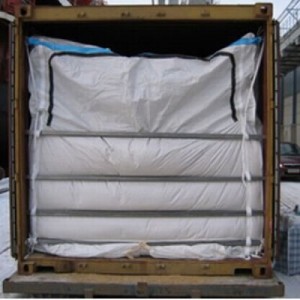
[spacer height=”20px”]
COFFEE TRANSPORTATION
Special permits are required to move or transfer coffee and once the required weights are met the parchment is ready for transport.
